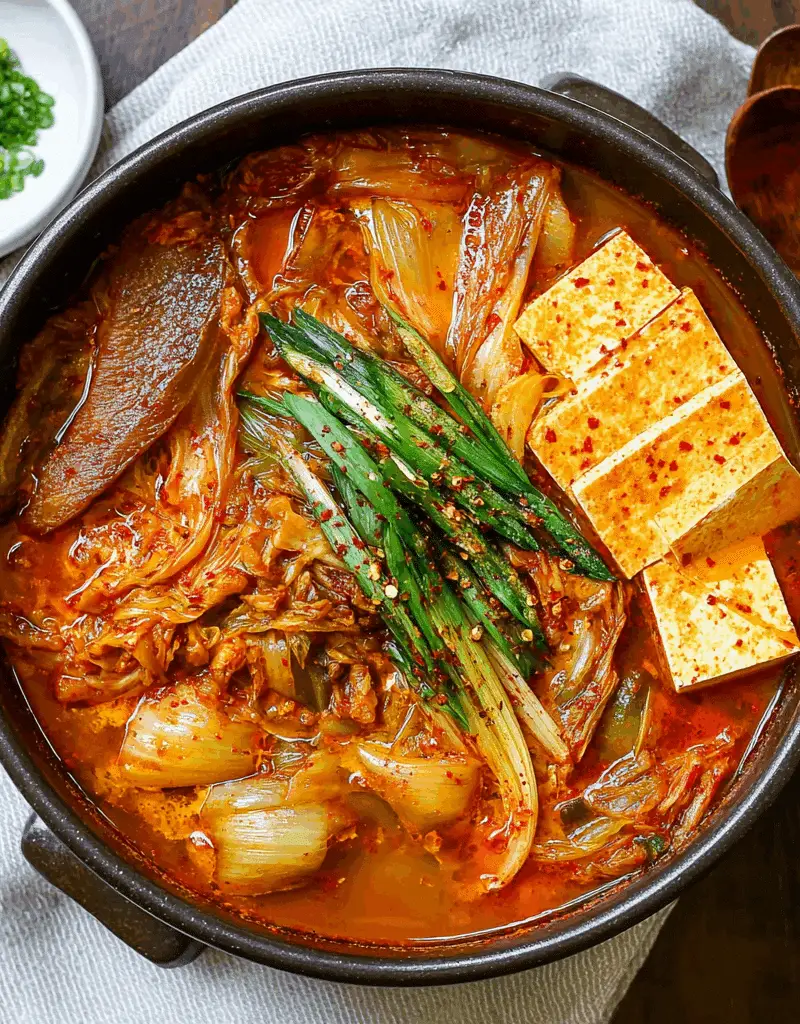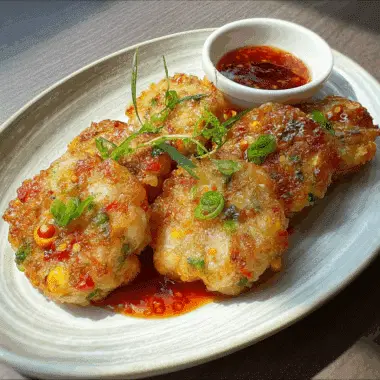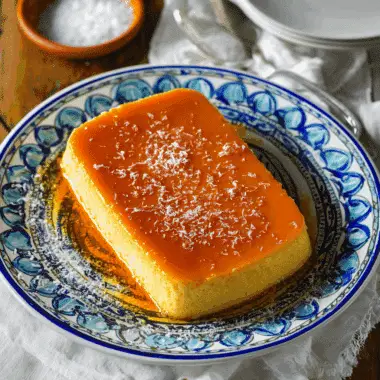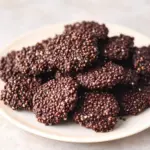The bold, spicy flavors of this Kimchi Jjigae bring authentic Korean comfort to your table. Made with tangy aged kimchi, tender pork belly, and silky tofu, it’s a stew that warms you from the inside out. This dish is a staple in Korean households and perfect for chilly days when you crave something deeply satisfying.
What makes this dish truly special is how simple yet layered the ingredients are. The umami from fermented kimchi, the spice from gochujang and gochugaru, and the richness of pork come together in harmony. Whether you’re new to Korean cooking or a long-time fan, Kimchi Jjigae is a must-try recipe that delivers maximum flavor with minimal effort.
Full Recipe
Ingredients:
-
1 1/2 cups aged kimchi, chopped
-
1/2 lb pork belly, sliced thin
-
1/2 block (200g) tofu, sliced into bite-sized rectangles
-
1/2 onion, sliced
-
2 green onions, chopped
-
1 tbsp gochugaru (Korean red chili flakes)
-
1 tbsp gochujang (Korean chili paste)
-
1 tbsp soy sauce
-
1 tsp sugar
-
1 tsp sesame oil
-
2 cups anchovy or beef broth (can sub with water)
-
1 clove garlic, minced
Directions:
-
Heat a medium pot over medium-high heat. Add sliced pork belly and stir-fry until some fat is rendered and pork is lightly browned.
-
Add chopped kimchi and continue to stir-fry for 3-4 minutes until fragrant.
-
Stir in gochugaru, gochujang, soy sauce, sugar, garlic, and sesame oil. Mix to coat the ingredients.
-
Pour in the broth and bring to a boil.
-
Once boiling, reduce heat to medium and let simmer for 20-25 minutes to develop the flavor.
-
Add sliced tofu and onions to the stew. Simmer for another 5-7 minutes.
-
Finish with chopped green onions and serve hot with steamed rice.
Prep Time: 10 minutes | Cooking Time: 30 minutes | Total Time: 40 minutes
Kcal: 320 kcal | Servings: 2 servings
The Heart of Korean Comfort Food: Kimchi Jjigae
Kimchi Jjigae (김치찌개), or Korean kimchi stew, is one of the most iconic and beloved dishes in Korean cuisine. Its popularity spans across generations and regions, making it a true staple of Korean home cooking. With its bold, tangy, and spicy flavor, this stew delivers a deep sense of comfort and satisfaction, especially during colder months. Whether served bubbling hot in a stone pot or ladled into a rustic bowl, kimchi jjigae is the type of meal that brings people together around the dinner table.
At its core, kimchi jjigae is a perfect example of using aged ingredients in a practical and flavorful way. Traditionally, the stew was a method to repurpose over-fermented kimchi, which becomes too sour to eat on its own. Rather than waste this potent and nutritious food, Koreans developed a rich and warming stew that actually benefits from the sharp tang of well-aged kimchi. Combined with tender slices of pork belly, tofu, and a savory broth, the result is an umami-rich dish with complexity far beyond its humble ingredients.
The History and Cultural Significance of Kimchi Jjigae
Kimchi jjigae isn’t just food—it’s an edible reflection of Korean history and resilience. The concept of kimchi itself dates back over 3,000 years, with early versions consisting simply of salted and fermented vegetables. As trade and agriculture evolved in Korea, new ingredients like chili peppers and napa cabbage were introduced and gradually integrated into the now-classic form of kimchi we know today.
The tradition of making large batches of kimchi—called kimjang—each fall allowed households to ferment enough to last through the winter. As the kimchi fermented and developed sharper flavors, it became ideal for cooking into stews. This is where kimchi jjigae became not just a dish of necessity, but one of comfort. It’s the go-to meal in many Korean homes when something hearty and deeply flavorful is needed—quick to prepare, yet rich in character and history.
Flavor Profile and Texture
What makes kimchi jjigae stand out is its unforgettable combination of bold, spicy, and savory notes. The dominant flavor comes from the aged kimchi, which delivers a sour and tangy punch. This is balanced by the richness of pork belly or other protein options, the gentle creaminess of tofu, and the umami depth added by fermented pastes like gochujang (Korean chili paste) and doenjang (soybean paste).
The stew often simmers long enough for all these ingredients to meld beautifully, creating a broth that’s complex and layered. While the texture of the stew can vary slightly depending on cooking time and ingredient choices, it generally features tender pork, melt-in-your-mouth tofu, and soft, flavorful kimchi that has absorbed the essence of the broth. The result is a meal that feels substantial and nourishing with every spoonful.
Versatility of Ingredients and Regional Variations
One of the reasons kimchi jjigae remains so popular is its adaptability. It can be customized with different proteins such as pork, beef, canned tuna (chamchi kimchi jjigae), seafood, or even mushrooms for a vegetarian version. Tofu is a common addition, offering a mild, silky contrast to the stew’s intense flavor. Some people also add instant ramen noodles or rice cakes (tteok) for extra substance.
Across Korea, variations of kimchi jjigae reflect regional preferences. In coastal areas, seafood-based versions are more common, while inland regions lean toward pork or anchovy broth. Some recipes call for the addition of perilla seeds or leaves for an earthy note, or even a splash of makgeolli (Korean rice wine) for added depth. These regional spins not only highlight the flexibility of the dish but also the creativity of Korean home cooks over generations.
Health Benefits of Kimchi Jjigae
Aside from its incredible flavor, kimchi jjigae offers a number of health benefits. The base ingredient, kimchi, is a probiotic powerhouse rich in lactobacilli that support gut health. It’s also packed with vitamins A, B, and C, as well as antioxidants from garlic and chili peppers.
When combined with tofu, which is high in plant-based protein and contains all nine essential amino acids, the dish becomes both filling and nutritious. Even pork belly, often thought of as indulgent, contributes valuable iron and B vitamins when eaten in moderation. Altogether, kimchi jjigae can be part of a balanced diet that supports digestion, immunity, and overall well-being.
Kimchi Jjigae in Modern Cuisine
While rooted in tradition, kimchi jjigae has evolved alongside modern Korean cooking trends. Today, it’s commonly served in Korean restaurants worldwide, often presented in sizzling stone bowls for extra dramatic effect. In Korea, it’s also a staple in pojangmachas (street food tents) and banchan-heavy home meals.
Thanks to the global popularity of Korean culture—driven by K-pop, K-dramas, and Korean cinema—kimchi jjigae is enjoying renewed international interest. Many non-Korean food enthusiasts have embraced the dish, learning how to make it at home using store-bought kimchi and accessible ingredients. Korean grocery stores, increasingly common in many countries, make it easier than ever to gather the ingredients needed for an authentic kimchi jjigae experience.
Serving Suggestions and Pairings
Kimchi jjigae is traditionally served with a bowl of hot, steamed white rice to help temper the spicy broth. The rice acts as both a palate cleanser and a vehicle for soaking up the delicious stew. It’s also typically accompanied by small Korean side dishes, known as banchan, such as pickled radishes, sautéed spinach, and seasoned bean sprouts.
For drinks, cold barley tea (boricha) or a light lager beer pairs beautifully with the heat and richness of the stew. If you’re in the mood for something traditional, try it with soju, Korea’s iconic distilled spirit—it complements the stew’s bold flavors while cutting through the fat of the pork belly.
Tips for the Best Kimchi Jjigae
The most important factor in a delicious kimchi jjigae is the kimchi itself. Use aged kimchi that’s at least two weeks old for the best results. The tanginess and depth of flavor that come from fermentation are crucial to developing the stew’s signature taste.
Secondly, don’t skip the gochujang or gochugaru if you’re aiming for authenticity. These ingredients add not just heat, but also depth, color, and body to the broth. Finally, take your time letting the stew simmer. While the dish can be ready in under 40 minutes, allowing it to cook just a bit longer enhances the richness and brings everything together harmoniously.
A Dish That Tells a Story
Kimchi jjigae is more than just a recipe—it’s a cultural treasure, a way to preserve tradition, and a meaningful part of daily life for millions. In Korean households, it’s often a dish of nostalgia, associated with family meals, late-night suppers, or humble dinners made from leftover ingredients. Yet, despite its simplicity, it never fails to deliver a complex, comforting taste that satisfies the soul.
In today’s fast-paced world, taking the time to prepare and enjoy a dish like kimchi jjigae connects us to the deeper rituals of cooking—nourishing not just the body, but the heart. Every bowl of kimchi jjigae is a small celebration of resourcefulness, flavor, and heritage.
Conclusion
Whether you’re a seasoned fan of Korean cuisine or someone just beginning to explore it, kimchi jjigae is a must-try dish. Its balance of tang, spice, and umami offers a one-of-a-kind experience that’s both comforting and exciting. Easy to adapt and endlessly flavorful, it makes an excellent weeknight meal and an even better dish to share with family or friends.
In embracing kimchi jjigae, you’re not just learning a recipe—you’re participating in a culinary tradition that stretches back generations. From its humble origins as a way to use sour kimchi to its current status as a global comfort food icon, kimchi jjigae represents the very best of Korean home cooking. Try it once, and it may just become a regular in your kitchen too.








